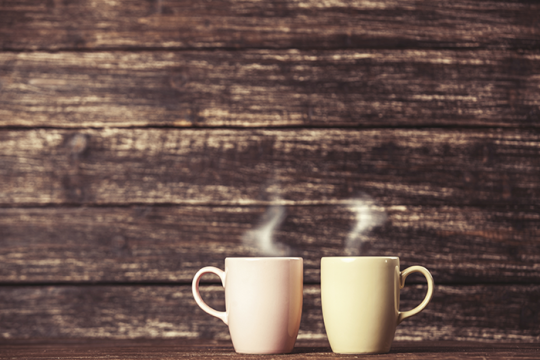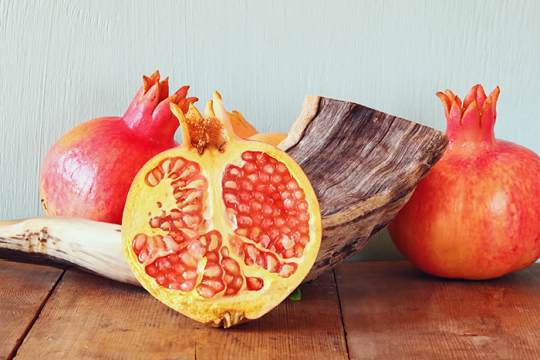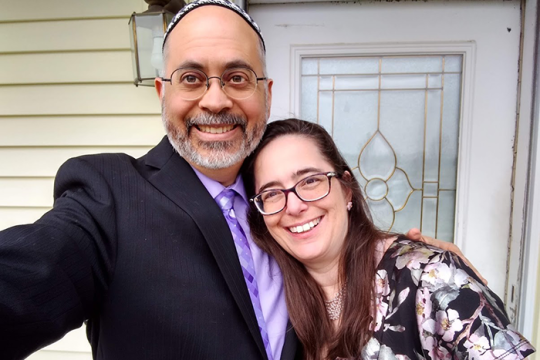
The Passover seder ceremony, says Rabbi Leora Kaye, director of partnerships and collaboration for the Union for Reform Judaism, is "the most heightened moment of the entire year"- a captivating retelling of some of the most important moments in Jewish history. The ceremony is built around the idea of freedom and connectedness. "It should be entertaining, it should be engaging, it should be an experience," she says. "You should invite people you know or don't know, who are or aren't Jewish - as many people as you can manage to have, that's how many you should have. It only engenders that much more connectivity." Here, Kaye details the background of Passover's most traditional elements, from asking the same four questions every year to leaving an extra cup of wine for Elijah.
The Text
Seder ceremonies rely on a common text, called the Haggadah, that lays out the foundational story of the holiday-the Jews' exodus out of slavery in Egypt and into freedom in Israel. More observant Jews might follow the most traditional script while other families may add contemporary prayers, readings, and discussions of current events; either approach works, since the seder is meant to be approachable and customizable for every participant. "We recognize the seder was written at a time different than the time we are living in, and because we want a living, breathing experience, we have to make those adaptions so it feels resonant with the family with whom you're sitting," says Kaye. "Part of the reason it's built in the way it is, is so it can be engaging for everyone from your youngest kid to your oldest adult. You can be in conversation with each other, and our history, and our religion, and with the story itself."
The Four Questions
As part of the ceremony, the youngest person at the seder is tasked with asking four questions: one about the seder as a whole, "How is this night different from all other nights?" and three about the food included in the ceremony. "One of the core elements of the seder is the idea of asking questions-the four questions symbolize the idea of the difference between being enslaved and being free," says Kaye. "We are teaching children from the youngest age possible that they are free and they can ask anything."
The Food
The seder ceremony includes a very specific set of foods , presented on a seder plate, each with its own symbolism. "Each food represents a different element of the story of Passover, from the cyclical natures of life to the bitterness of what it was to be slaves," says Kaye. The meal also includes four cups of wine-or juice, for participants who don't drink alcohol-symbolizing God's four promises of deliverance within the Exodus story. Another elemental part of the seder menu is the matzo, an unleavened bread, which calls back to both the haste with which the Jews fled Egypt-so quickly they couldn't wait for their bread to rise-as well as symbolizing the process of streamlining your own self-image.
"Part of what it means to eat matzo is, for a full week, you're really taking the egotistical pieces out of yourself, and thinking about what it is that is really at your core, who you want to be," says Kaye. "This is a chance to reimagine for yourself: what are the things that are most important to you? And what does that mean and look like for your own self, soul, personality, and relationships?" The last food eaten is a small piece of matzo, called the afikomen, which is broken and then hidden during the meal for the kids to find at the end. "Everyone eats it together, and technically, once you eat the afikomen, you're not supposed to have any more dessert," says Kaye.
A Cup for Elijah
A newer seder tradition includes placing a cup of water on the table for Miriam, Moses's sister, who led the celebration after the Israelites crossed the Red Sea. Her cup joins one left for Elijah, a prophet who is "conventionally understood to be the harbinger of the Messiah," says Kaye. "Elijah symbolizes a messianic time-a time we are responsible for bringing about, when there will be less pain, less misery, and more people who are fed and clothed throughout the whole world." During the seder, a glass of wine is poured for Elijah, and as part of the ceremony, someone-usually the children-goes to the door of the home and open it to symbolically welcome him in (while an adult at the table quickly downs the wine, indicating to the little ones that Elijah has stopped by). "The idea is to build in them the hopefulness of what it might meant that Elijah has been with us," says Kaye. "Even if you have no children at your seder, you have to go open the door for Elijah, because it is so paramount that we continue to believe that we-as a Jewish community and as individuals-are working as hard as we can to really bring about a world of wholeness and justice and compassion. We have to believe that maybe this year, when we open that door, he is going to be on the other side."
Reclining in Celebration of Freedom
As the seder comes to an end, the text calls for participants to recline in celebration of freedom-which, says Kaye, is exactly what it sounds like. "Reclining in celebration of freedom," she says, "because we are so free that we could even just recline!"
This article was originally posted on marthastewart.com.
Related Posts

18 Tips for Your Coziest Shabbat Yet

613 Mitzvot, 613 Seeds: A Look at the Pomegranate’s History, Symbolism, and Uses

